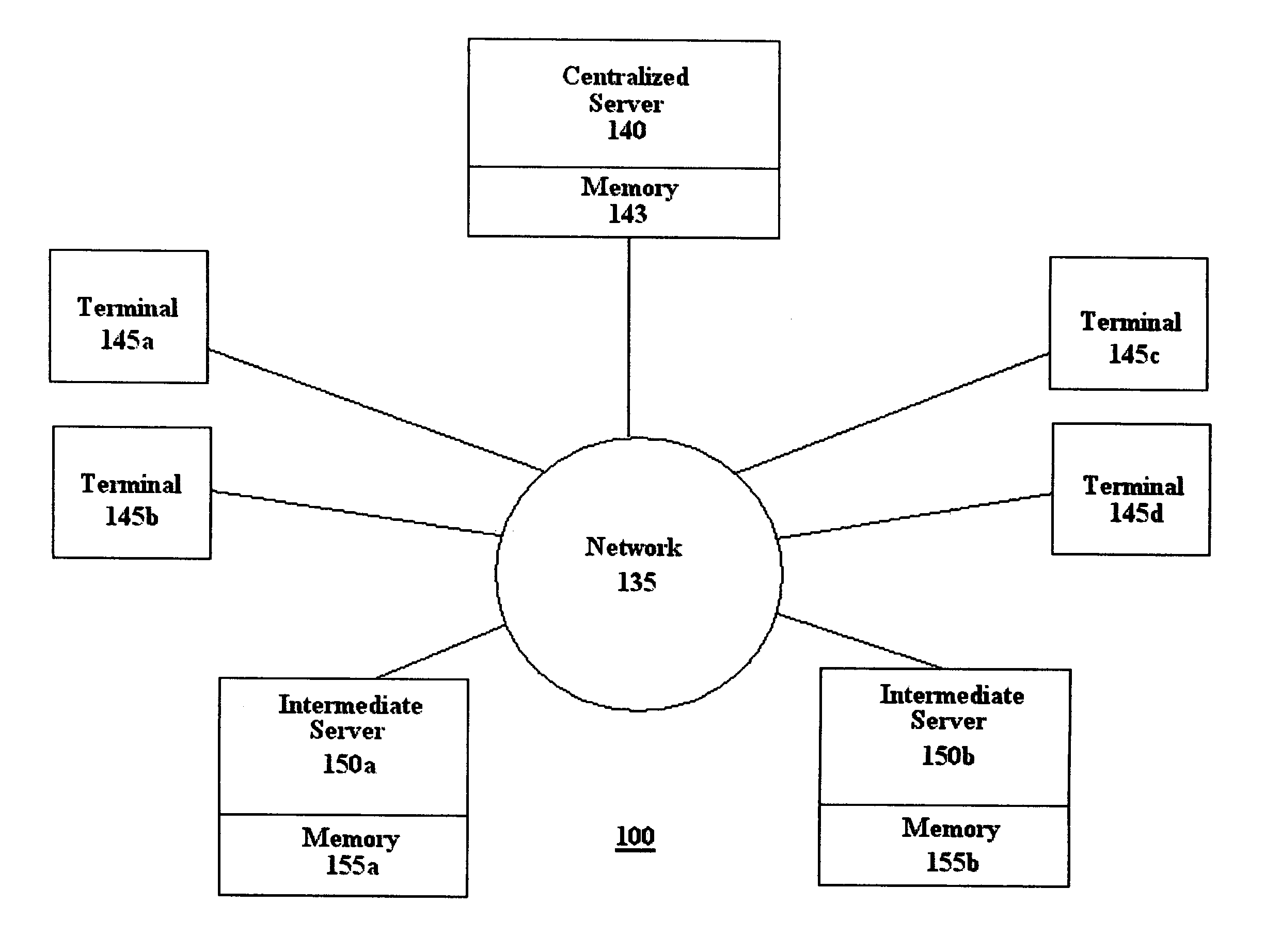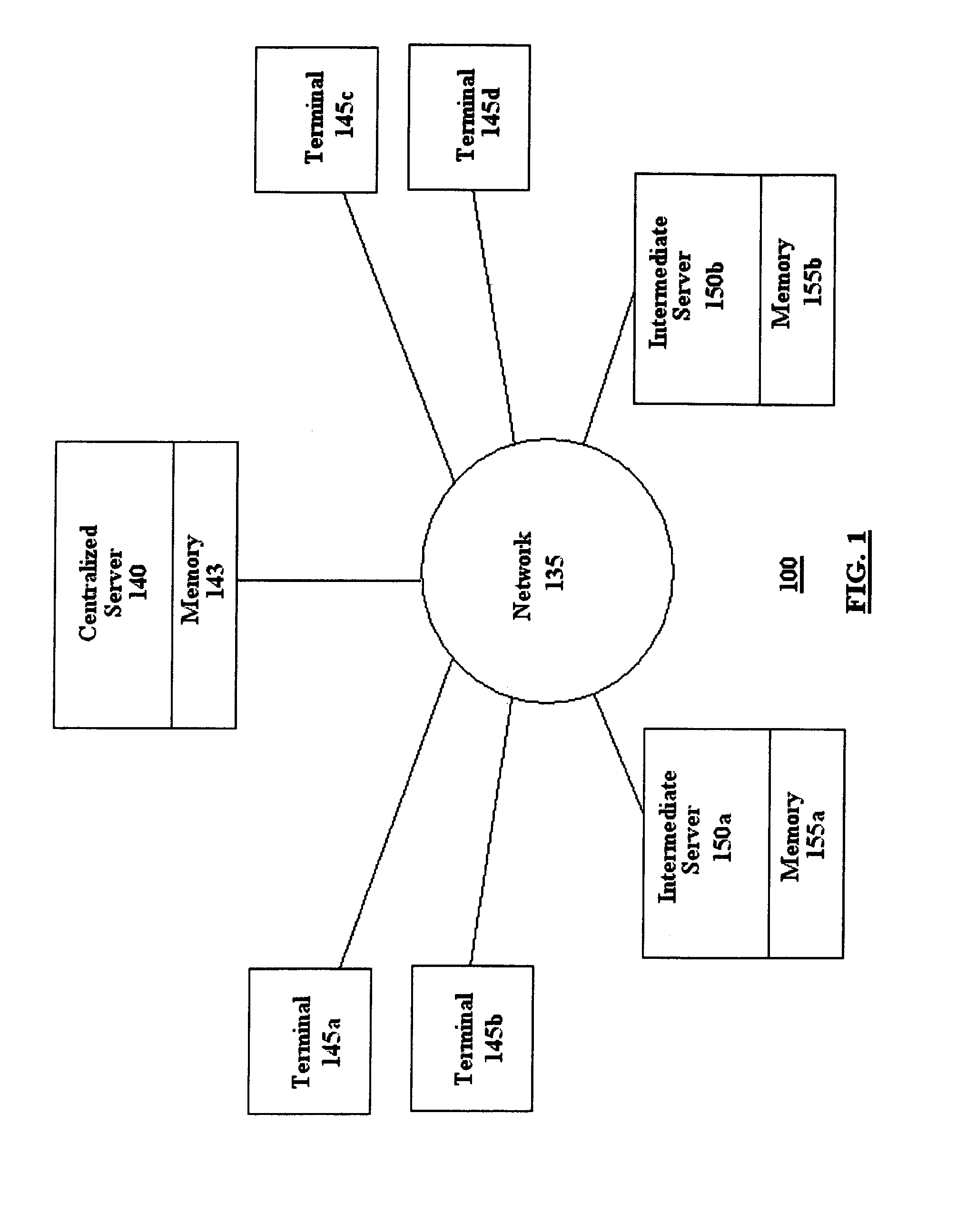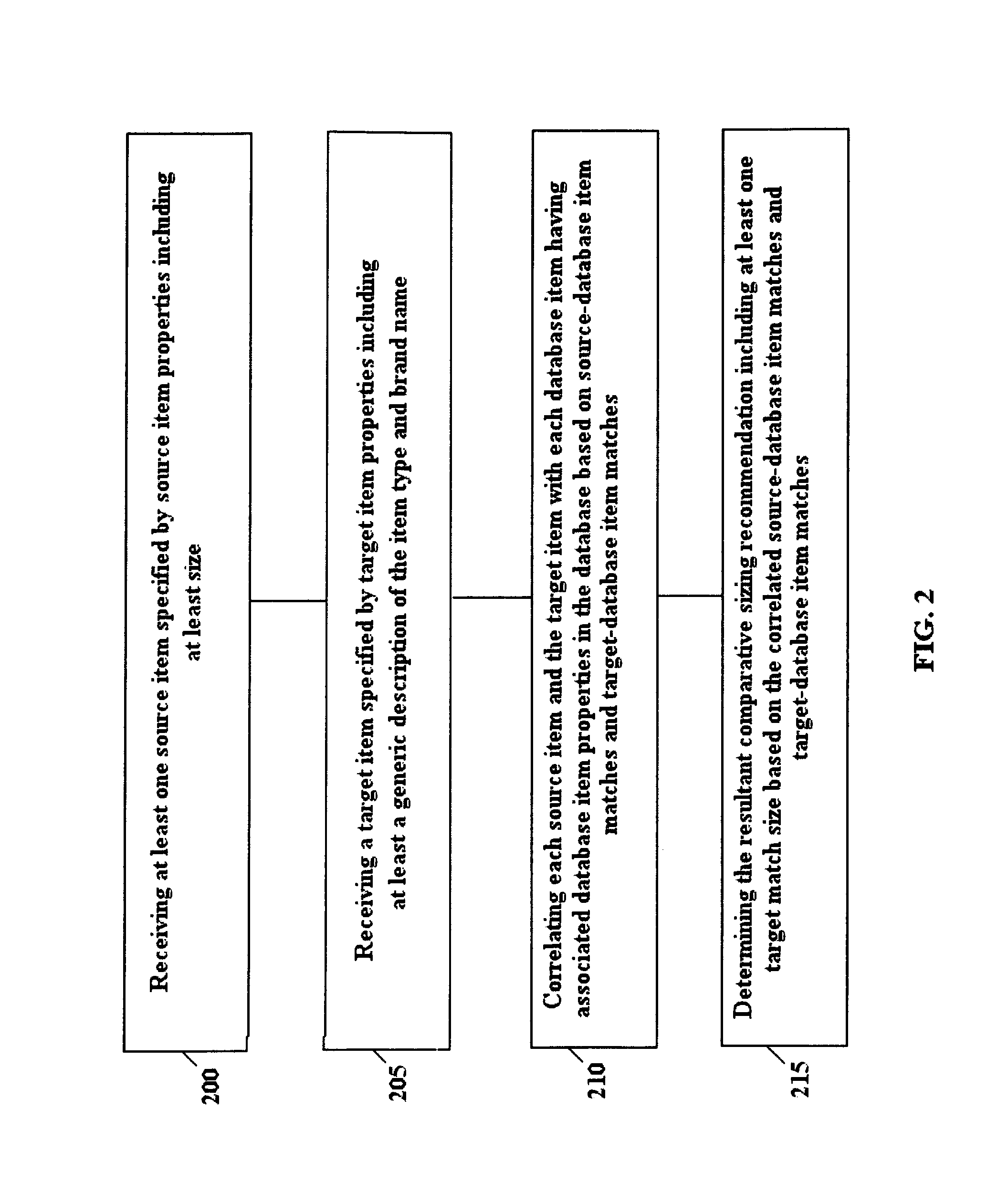System and method for comparative sizing between a well-fitting source item and a target item
a technology of source items and target items, applied in the field of system and method for comparative sizing between a well-fitting source item and a target item, can solve the problems of time-consuming, difficult to meet the needs of shoppers, and difficult to select the correct size in an item,
- Summary
- Abstract
- Description
- Claims
- Application Information
AI Technical Summary
Benefits of technology
Problems solved by technology
Method used
Image
Examples
example
[0064]User A, a single-session non-registered user without an account provides a single well-fitting source item (Source Item 1) in their current wardrobe by identifying the following source item properties associated with Source Item-1: Brand: Gap™, Item Type: Denim Pants, Style name: Curvy, Stretch: Yes, Waist: Low Rise, Cut: Skinny / Slim, Size: 4. These source item properties are then correlated to each Database Item in the database having a total of ten database items (Database Item-1, Database Item-2, . . . , Database Item-10) to generate a list of source-database item matches. In this example, source-database item matches require at least match in size and brand as well. Three source-database matches are identified.
[0065]A first source-database item match (SDIM-1) is identified among the source item properties associated with Source Item-1 and Database Item-2 having the following associated database item properties: Brand: Gap™, Item Type: Denim Pants, Style name: Curvy, Stretc...
PUM
 Login to View More
Login to View More Abstract
Description
Claims
Application Information
 Login to View More
Login to View More - R&D
- Intellectual Property
- Life Sciences
- Materials
- Tech Scout
- Unparalleled Data Quality
- Higher Quality Content
- 60% Fewer Hallucinations
Browse by: Latest US Patents, China's latest patents, Technical Efficacy Thesaurus, Application Domain, Technology Topic, Popular Technical Reports.
© 2025 PatSnap. All rights reserved.Legal|Privacy policy|Modern Slavery Act Transparency Statement|Sitemap|About US| Contact US: help@patsnap.com



